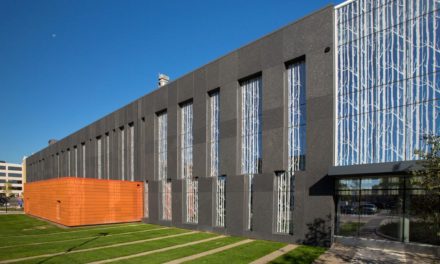The report “Liquid Roofing Market by Type (PU/Acrylic Hybrids, Polyurethane, Acrylic, Bituminous, and Silicone Coatings), Application (Residential Buildings, Commercial Buildings, Public Infrastructure, and Industrial Facilities) – Global Forecast to 2021” published by MarketsandMarkets, states the liquid roofing market size is projected to reach $7.48 billion, at a CAGR of 7.1%. by 2021.
The market size is estimated to be 3,439.3 million square meters by 2021, registering a CAGR of 6.7% between 2016 and 2021. The growing construction industry, increasing demand for energy-efficient buildings, and continuous new product launch/development, agreement/collaboration, expansion, and merger & acquisition activities undertaken by companies are the key factors driving the global liquid roofing market.
Elastomeric membranes are projected to register the fastest growth in comparison to other types of liquid roofing, followed by silicone coatings, in the global liquid roofing market. The demand for elastomeric membranes is mainly driven by their extensive use in the construction industry for waterproofing and protecting surfaces against abrasion and chemicals.
Scope of the report
This research report categorizes the liquid roofing market based on type, application, and region, and forecasts revenue growth and analysis of trends in each of the submarkets.
Type:
- Polyurethane coatings
- Acrylic coatings
- PU/Acrylic hybrids
- Bituminous coatings
- Silicone coatings
- Modified Silane polymer
- EPDM rubbers
- Elastomeric membranes
- Cementitous membranes
- Epoxy coatings
The report found that silicone coating was the largest segment for the liquid roofing market in 2015. The unique combination of properties of silicone coatings is well suited to coating applications and enable the coating to wet a substrate easily and give it a smooth appearance once dry. Silicone resins offer resistance to weathering in coatings for exterior surfaces such as bridges and roofs of buildings. They also provide water repellence to masonry surfaces such as stone and brick.
Application types:
- Residential buildings
- Commercial buildings
- Public infrastructure
- Industrial facilities Residential buildings
The residential buildings industry includes both roofing and reroofing activities. Residential buildings include all types of residential structures such as houses, town houses, cottages, condominiums, and apartments. Rising standards of living and growth in the construction industry are both key factors driving the market for liquid-applied roof coatings for residential buildings.
Regions
- Europe
- North America
- Asia-Pacific
- South America
- Middle East & Africa
Asia-Pacific
China, India, Japan, and Australia are some of the key areas that make up the liquid roofing market in Asia-Pacific, and together accounted for nearly 38.12% of the overall market, in terms of volume, in 2015.
Rising population, urbanization and industrialization, along with growing concerns related to infrastructure development and waterproofing in China and India, are some of the factors that will drive the market for liquid roofing in Asia-Pacific during the forecast period.
Residential construction activities in Asia-Pacific have increased due to rising income levels, a shift toward nuclear families, affordable interest rates, and changing preferences in respect to home ownership in several countries. Several new construction projects are expected to begin in the region during the forecast period, thus driving the liquid roofing market.
While the liquid roofing market is rapidly gaining importance, a few factors restrain its growth. Although the elastomeric membrane market is projected to be the fastest growing segment during the forecast period, their higher costs compared to alternatives is a major growth restraint. Another restraint is difficulty in the proper application of elastomeric membranes. Elastomeric membranes need to applied using a higher film thickness to achieve desired results, such as crack bridging ability, more flexibility, and resistance to dirt, waterproofing, and weatherproofing. The necessity for higher thickness of elastomeric membranes makes it more expensive than alternative membranes.
The cost of elastomeric membranes is similar or marginally more than single-ply membranes. However, the application cost is much higher. Elastomeric membranes require application by higher skilled applicators and material than a standard sheet membrane. The report states that elastomeric membranes are especially designed by paint manufacturers to stretch beyond 300% of its original strength and therefore more expensive because they provide more longevity and stretch properties to alternatives.
Companies such as BASF (Germany), Dow Chemical (U.S.), Saint-Gobain (France), 3M (Minnesota), AkzoNobel N.V. (Netherlands), Bergquist Company (U.S.), Indium Corporation (U.S.), and Parker Hannifin (U.S.) are the key players in the market. The diverse product portfolio, strategically positioned R&D centers, continuous adoption of development strategies, and technological advancements are some of the factors that strengthen the market position of these companies in the liquid roofing market. They have been adopting various organic and inorganic growth strategies to enhance the current market scenario of liquid roofing.
About MarketsandMarkets:
MarketsandMarkets is the largest market research firm worldwide in terms of annually published premium market research reports. Serving 1700 global fortune enterprises with more than 1200 premium studies in a year, M&M is catering to a multitude of clients across 8 different industrial verticals. We specialize in consulting assignments and business research across high growth markets, cutting edge technologies and newer applications. Our 850 fulltime analyst and SMEs at MarketsandMarkets are tracking global high growth markets following the “Growth Engagement Model – GEM”. The GEM aims at proactive collaboration with the clients to identify new opportunities, identify most important customers, write “Attack, avoid and defend” strategies, identify sources of incremental revenues for both the company and its competitors.
M&M’s flagship competitive intelligence and market research platform, “RT” connects over 200,000 markets and entire value chains for deeper understanding of the unmet insights along with market sizing and forecasts of niche markets. The new included chapters on Methodology and Benchmarking presented with high quality analytical infographics in our reports gives complete visibility of how the numbers have been arrived and defend the accuracy of the numbers.
We at MarketsandMarkets are inspired to help our clients grow by providing apt business insight with our huge market intelligence repository. Visit MarketsandMarkets Blog @ http://www.marketsandmarketsblog.com/market-reports/chemical. Connect with us on LinkedIn @ http://www.linkedin.com/company/marketsandmarkets.
SOURCE MarketsandMarkets





